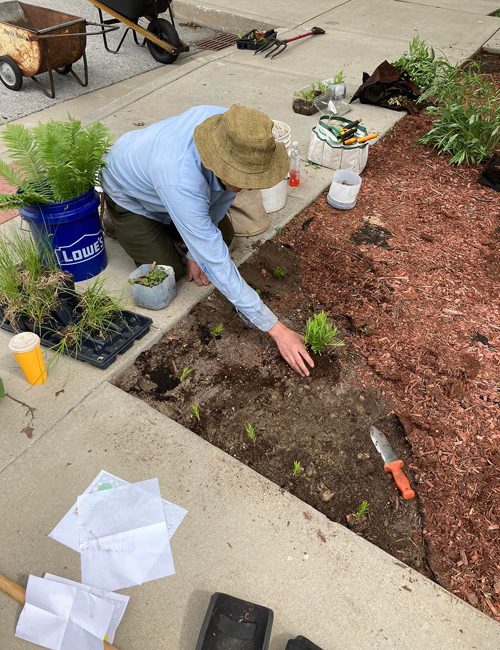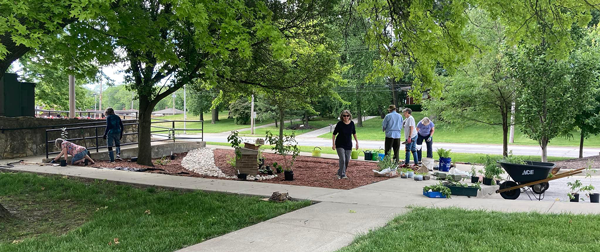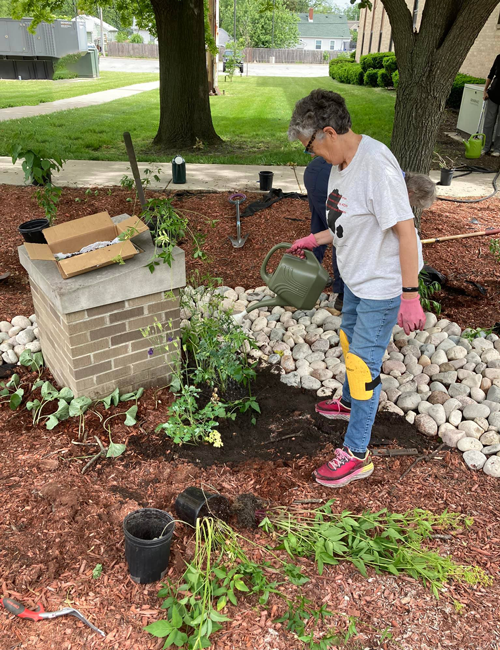HighlandIndiana
Sanitary District – Stormwater Management
The United States Environmental Protection Agency cares about stormwater quality, how it impacts pollution of waterways throughout the country and how to improve it for the health of the waterway, surrounding ecosystem and all who rely on it. Highland is one of nearly 200 MS4 (Municipal Separate Storm Sewer Systems) communities in Indiana that has separate sewer systems for sanitary waste and stormwater. Sanitary waste is sent to a treatment plant. Stormwater is discharged directly into local bodies of water.
Every time it rains or the snow melts, water that isn’t absorbed by soil or held by tree roots runs along curbs, and flows along hard surfaces – such as concrete and asphalt – en-route to the nearest stormwater drain. Much of the water that falls in Highland is considered runoff – from driveways, streets and parking lots. Along its path, droplets pick up oil, grease and sediments that harm not only the path of the water, but its ultimate destination.
Over time, bodies of water polluted with contaminated soils, automotive fluids and lawn chemicals impact the ability to use the waterway for drinking water or for recreational purposes while also degrading habitats for fish and animals. The only way to lessen the problem is to reduce the pollutants in the water.
Highland Neighbors for Sustainability have installed a rain garden at the Municipal Complex between Town Hall and the Highland Police Station. The self-sustaining rain garden is filled with native plants designed to absorb rainwater runoff and reduce flooding.
Highland Sanitary District is looking for the public’s help in reducing pollutants in stormwater runoff. There is plenty you can do:
RAIN COLLECTION: Get a rain barrel – or two. Place your rain barrels at the base of downspouts. Each rain barrel typically holds 55-75 gallons of rainwater runoff from your rooftop. Use that extra rain on plants and trees during dry spells. Helping the environment can also help you save money.
NATIVE PLANTS: Landscape with native plants and grasses. It reduces stormwater runoff and reduces the need for watering or fertilizing.
CHEMICALS: Reduce or eliminate the use of fertilizers, chemical herbicides and pesticides. Chemicals used on lawns are a big source of nitrogen and phosphorous pollution and toxic runoff.
RAIN GARDENS: Create a rain garden on a low-lying spot on your property. Using native plants that can handle wet soil, rain gardens reduce flooding and erosion while filtering runoff.
TREES: Plant a tree. In addition to providing an abundance of oxygen, trees are valued for holding soil in place and holding hundreds of gallons of surplus water in their maturing root system. They also take up fertilizer and other chemicals in their roots before they seep into waterways. At the same time, they can provide shade that reduces energy costs.
Address
8001 Kennedy Ave.
Highland, IN 46322
(219) 972-5083 main number
(219) 972-5085 fax
Tim Gembala
Operations Director
and MS4 Coordinator


